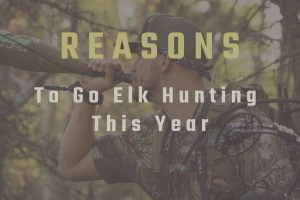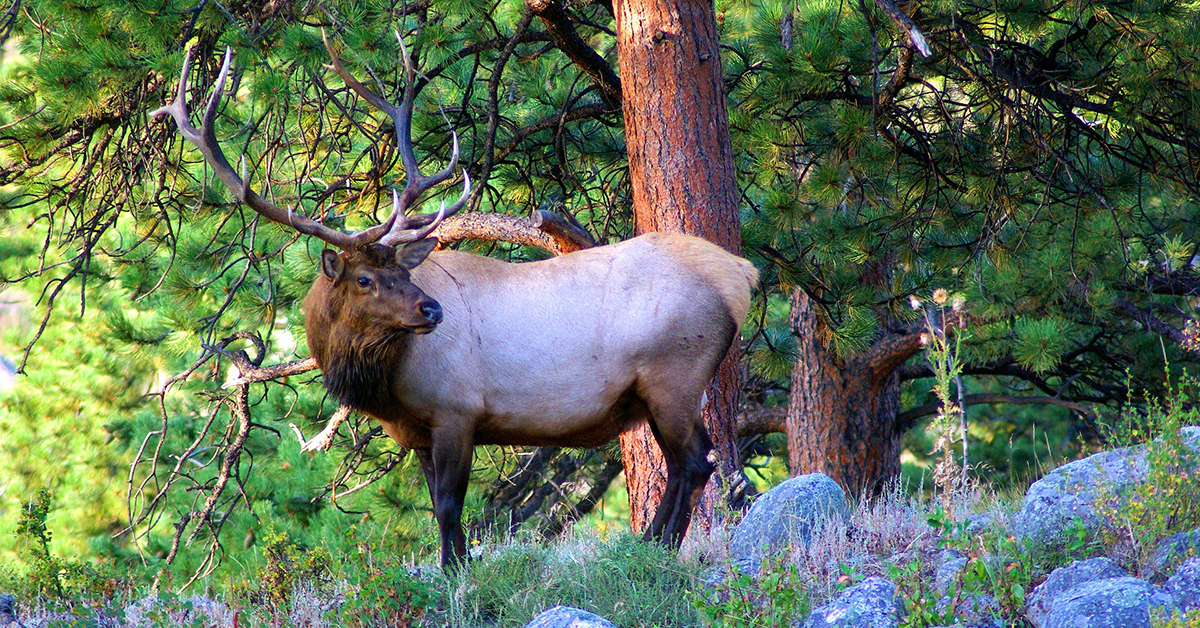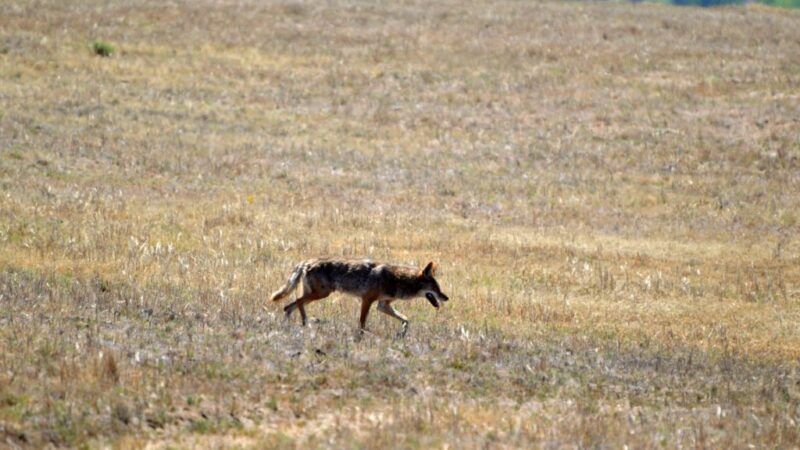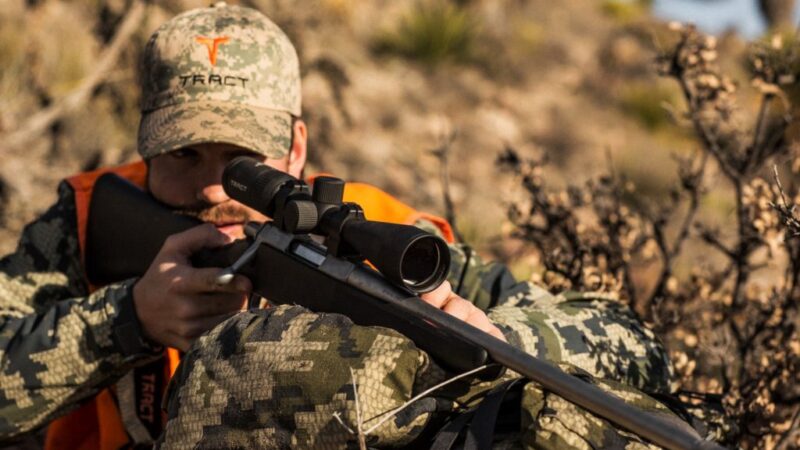Reasons to go Elk Hunting This Year

Reasons to go Elk Hunting This Year
Reasons to go Elk Hunting This Year. Even if you didn’t draw a tag, there are still plenty of reasons to go elk hunting this fall.
Fall is just around the corner. And as draw results trickle in for elk hunting in the western states, there is always a large contingent who, year after year, don’t get the unit they applied for. This isn’t necessarily a bad thing because your preference points are sure to yield you a much sought-after area to hunt in the years to come. However, and a very fortunate thing it is for elk hunters everywhere, we can happily rely on over-the-counter (OTC) tags in many states that allow residents and non-residents alike to chase the mighty wapiti with bow and gun.
First, let’s consider where we want to go. What season will we choose to hunt – archery, 1st, 2nd, or 3rd rifle? Then comes the hours of scouring the internet for every tidbit of information you can find, including where to go, how to get there, what to pack, tips and tactics to increase the chances of success, as well as rules and regulations.
There’s a whole lot of work to put in and it starts now. And to be honest, the preparation can be one of the most fun parts of the whole adventure. Just the other night I woke with a start at 3 a.m. after dreaming about an encounter with a big bull elk. I immediately got up, made coffee, and started reading about elk hunting. Just the thought of getting into the mountains, to experience the great outdoors, fuels my dreams and keeps me counting down the days until fall arrives.
WHERE TO GO
For the sake of this article, we’re going to focus on a few of our favorite western states where we know the hunting is good. Of course, good is a relative term that means different things to different people. What we mean by good is that you’re pretty much guaranteed a tag to hunt a wilderness area where you and your hunting party won’t see very many people, all the while having a decent chance at harvesting a bull.
Colorado
One of our favorite states to hunt in, Colorado is home to the largest elk herd in the United States at around 250,000 animals. OTC tags are super accessible and therefore easy to get. The downside is higher hunting pressure, but for those who are prepared to go far off the beaten path, the reward can also be high.
Bowhunters should check out Unit 13 in the northwestern part of the state where the success rate is good year after year. The hunting pressure is fairly steady, so mark a few places on the map where the majority of those hunters aren’t likely to go and set your sights there. Unit 70 is another stout option, where bowhunting success of the last several years has hovered around 17%. For more information on rules and regulations, check out the Colorado Parks & Wildlife website.
Idaho
The Gem State is another accessible option. While the elk population is not quite what it is in Colorado, this also means that hunters are fewer. If you’re willing to put in the work to get as far away from roads as possible, you could hunt Idaho for weeks and not see another soul outside your own party. In fact, the statewide success rate is about 20-25% due in part to the low number of hunters.
Unit 66A is a surprisingly solid choice when you’re deciding where to hunt elk in Idaho this fall. We say “surprisingly” because annually it sees a fair number of nonresident hunters and it home to a large wolf population. However, this unit is more than 170,000 acres, most of which is forest, that produces some of the largest bulls in the state. Heads up, you may go for days without so much as seeing sign only to stumble upon a herd with a Boone & Crockett bull. The Idaho Department of Fish & Game website is where you can find more information regarding rules and regulations.
Utah
Utah, widely known for its monster mule deer bucks, is also a great elk hunting state. Utah’s OTC tags are available on a first come, first serve basis. While the rifle seasons are a little more restrictive on where you can hunt, and have a cap on the number of permits issued annually, the archery season gives hunters more freedom to move between units and tags are unlimited.
Utah boasts more than eight million acres of U.S. Forest Service land, almost 23 million acres of BLM, and nearly 4 million acres of open state land. That’s a lot of land to hunt! Focus on the Wasatch and Uinta Mountain ranges, which is the state’s main elk habitat. A couple things to know about Utah is that not many people hunt public land, and those that do don’t get very far from the road. So, hike hard and you could be rewarded. For more information on general guidelines, check out their Big Game Field Regulations Guidebook.

HOW TO HUNT Elk Hunting
You can hunt elk with bow and arrow, muzzleloader, or a rifle. Between archery and rifle, there are pros and cons to each, which we’ll talk about. Let’s begin with what most hunters will tell you is the reason they’re successful year after year: scouting.
Scouting
This is without a doubt the toughest aspect of elk hunting. That’s because most non-resident hunters don’t have the time to travel to Colorado, Utah, or some other western state to spend a week in the summer scouting for elk. With work, family, little league, and life in general, scouting is pushed until the few days before the season begins, at most. But maybe there’s a way to circumvent the frustrations of showing up to a new area and leaving empty handed, though this plan will take patience.
Consider this a four-year plan, where year one you select a unit in say Colorado that you know holds a lot of bulls. You’ve never been there and have only used Google Maps or some other topographical map to see the lay of the land. Use that first year to cover as much ground as possible in hopes of determining prime bedding and feeding areas. You’ll spend the majority of your time sitting and glassing distant hillsides, especially at first and last light, the cooler times of day, when these big animals tend to move.
The second year you’ll hone in a bit more, same with the third. At any time you may stumble upon a shooter at and spend the rest of the week packing out meat. But in the likelihood that you don’t, at least by that fourth year, you’ll know exactly where to set up camp and focus your hunting efforts every day. If you have the patience to see it through, you could find yourself a hot spot that yields good bulls and a bounty of meat for many years to come.
Hunting the Archery Season
Days in the mountains and nights beneath the stars with some of your closest companions is a great thing. So it’s hard to talk about downsides when it comes to hunting. Please know that we’re only speaking in general terms.
In several states, the archery season begins in mid August, when it’s still pretty hot, even at high elevations. You’re going to have to get into the high country where the elk will be this time of year. The fastest and most efficient way to get there is by packing in with horse and mule. Or, like an Everest expedition, you can also shoulder the load and work your way to the top on foot. If you’re choosing the latter option, give yourself a few extra days on each end of the trip to hike in and in the case that you harvest an elk, pack it out.
As you may well know, hunting with a bow and arrow decreases your kill range. In other words, you’re going to have to pull that bull to within 40 yards to make a clean shot. The upside is that bulls are really aggressive and responsive to calls and scents this time of year as they’re trying to build a harem of cows and ward off any intruding bulls. Consider using a decoy to add a visual element to your setup and increase the enticement to any bull who’s looking for the source of your cow calls.
Hunting the Rifle Seasons
There could be multiple rifle seasons in the state you wish to hunt. In Colorado, for example, there are three, which range from mid October to late November. By the time rifle seasons roll around, elk have some hunting pressure on them. Bulls have largely built their harems though the chance of drawing one in via calls is pretty good. Most bulls are so eager to continue breeding that they’ll continue searching for cows in estrus, especially during the first rifle season.
Herds have moved to lower elevations as well during the rifle seasons. Fall weather has cooled temperatures and food sources become scarce in the high country. This forces them to inhabitat the dark timber and vast meadows and if you’re in an agricultural area, fields where winter crops are coming up.
Hunting pressure will be up a bit during the rifle season as well. So no matter where you are, be sure to wear hunter orange at all times.
WHAT TO PACK
Do-it-yourself elk hunting adventures require a bit of gear because you’re hunting, camping, and hiking. The trick is figuring out how to minimize all the stuff required to live comfortably in the mountains for a week or so.
Camping
Yes, your hunting gear is extremely important. But the way you use it could be negatively affected if you’re not sleeping and eating well. First thing you want to invest in is a good tent, a refuge to escape inclement weather. Good one- and two-man tents weigh only a few pounds and are very affordable from companies like REI. Be sure to add a rain fly if for whatever reasons it doesn’t already come included.
Next is your sleeping pad. It really works in tandem with your sleeping bag though the pad’s quality is going to be the difference between a good and bad night’s sleep. Make sure the pad is at least the length of your body and thick enough so you don’t feel anything underneath. The last thing you want to do is toss and turn all night.
Of course your sleeping bag is what will do the most to keep you warm on cold nights. Depending on what time of year you’re there, consider anywhere from a 0- to a 30-degree rated bag. They too should pack small and not take up an extraordinary amount of room in your pack.
Hiking sticks are worth considering as well as they will factor largely into your overall comfort because of the amount of pressure they take off your legs. One is fine but two is optimal. When you’re packing in, with 40-50 pounds of gear on your back, hiking sticks will make a huge difference and help your body endure more throughout the week.
Eating and Drinking
Must. Have. Energy. Go ahead and overestimate the amount of food you think you’ll eat. You’re going to trek up and down the mountain day in and day out in all kinds of weather conditions. There’s not much better than a hot meal after a physically exhausting day.
With nothing more than a Jetboil, isopropane, spork, some water, and a little company called Mountain House, you can eat really well in the mountains. As far as freeze-dried food goes, Mountain House is the best – mix with hot water and voila your meal is ready. The options they’ve devised make it seem like you’re eating in a restaurant. This is a go-to option for backcountry hunters who require sustenance that doesn’t take up a lot of space. Energy bars are great snacks to have throughout the day.
Don’t forget your water filtration system. Hopefully you’ve planned a camp near water. You’ll also find that there are many creeks in the backcountry you may not have seen on a map. Iodine tablets work well too, though we rely on a filter from MSR that’s compatible with Nalgene bottles. It screws to the top of the bottle while you quickly pump in drinkable water.
Instant coffee is a must as well. NesCafe is a good option that requires a little hot water to create a solid cup of joe to start the day. You can find little individual packs that weigh next to nothing.
The bonus to eating well in the mountains is if you kill an elk. Pack a little salt just in case. There are numerous ways for the minimalist’s approach to cooking elk meat in the mountains, the most common of which is to devise a spit to roast it over the fire.
PREPARATION
We’ve talked about scouting, but something else we need to mention is the preparation of overall physical and mental conditioning. They go hand in hand. Mental toughness does you no good without the physical stamina to endure the rugged terrain of the mountains. Same with the physical. If you’re deterred by a little bit of cold or rainy weather and confine yourself to camp, then it doesn’t matter how good of physical shape you’re in.
Start as soon as possible by hiking your local trails. Increase your distance and elevation gain as you start to feel your lungs and legs get stronger. Then, start carrying a pack, working your way up to more weight than you’ll carry in. The reason more is better is because there’s a chance you don’t live at the altitude you’ll be hunting. And while there’s no substitute for altitude, the extra weight will help build more muscle mass in your body. The physically fit tend to recover much more quickly than those who get winded easily.
Practice every day with your bow or rifle. Imagine scenarios and see them through as if you’re already in the elk woods, shooting from every position that’s safely possible. Carry your bow or rifle with you on your hikes as well and have targets set up along the way. Better yet, have your partner set them up so you don’t know when they’ll appear. This will help you stay alert and avoid the element of surprise that spoils so many elk hunts. Another factor to master is breathing. If you can control your breathing when it is time to take the shot, the margin of error is much, much smaller.
QUARTERING AND PACKING OUT AN ELK
If you can quarter a deer, then you can quarter an elk. It’ll just be a lot more weight and you’re going to carry it much further without the help of an ATV or pickup truck.
If you can, carry more than one knife and definitely have a sharpener because the tough hide of an elk will quickly leave you with a dull blade. Start skinning on the back. Unlike a deer, you don’t need to gut an elk. It’s a lot of unnecessary work. Work your way along the spine from tail to the base of the neck; the latter is an important stopping point if you’re saving the cape for mounting.
Then, like you would any other animal, take off the hams, then the backstraps. Now, I know what you’re thinking, “How can I get the tenderloins if I don’t gut this animal?” Go through the ribs. Using a combination of your fingers and your knife, you can work the tenderloin away from the bone and pull it through the rib cage. Cut off the shoulders and as much neck meat as you can. Finally, remove the head and cape.
Meat should be stored in something similar to a cheesecloth as you’re moving it back to camp. A gauze-like material will keep dirt off the meat while soaking up the blood. It will also help keep any water or humidity off the meat which could draw flies and maggots.
There are a variety of great packs with built in “meat shelves” to help you load up and lug out your meat. These packs will evenly disperse the weight between your lumbar and shoulders, just like a good hiking pack. Depending on how many you have in your hunting party, you may have to make multiple trips. If so, move the meat and the cape away from the carcass and hang them in a tree. The ethically correct order of packing is meat first, antlers last. Start with the hams since they are the heaviest.
GETTING MEAT HOME FROM THE HUNT
Unless you’re hunting with a guide or outfitter, chances are you’re driving to the elk woods. While a cross-country trek takes a lot of time, it’s worth it to not only have your vehicle as a mode of transportation while you’re out there, but also to get meat home from the hunt. Double roto-molded coolers have made it a lot easier to prevent thaw than the old ice chests of yesteryear. With several coolers, you can evenly divide the meat and pack in dry ice. It will last for several days and keep your meat safe. Plus, you can buy more on the trip home.
Some serious DIY elk hunters will even buy a portable freezer to haul in the beds of their trucks. You know, just like the ones you’d have at home, except this one plugs into your vehicle and can stow the majority of your meat for safe transport.
WHY GO ELK HUNTING
Last fall, a good friend of ours named Michael Turbyfill, along with his wife, spent most of the Colorado archery season hunting elk in the rugged southern Rocky Mountains. They drove from North Carolina, spent a few days scouting, and then set their sights on a some areas they knew held elk. After many days and nights, they went home empty handed. Such is hunting.
Despite their unpunched tags, the duo gained a wealth of knowledge and overall life experience. They saw several great bulls, witnessed some epic sunrises and landscapes, and had the opportunity to spend a lot of quality time together. The Turbyfills also did a fantastic job of documenting the entire process from preparation leading up to the trip to the hunt itself.
So why go elk hunting? Because it will give you the opportunity to explore and live in the natural world like you may not otherwise experience it. It’s about time with friends and family in the remote reaches of this country where not very many men and women have set foot. National forest, BLM, all public land, it’s yours to enjoy. And after the crazy year we’ve had so far, it’d do everybody some good to disconnect and instead let the mind wonder what’s in that draw over the next hill. You never know, when you get there, it could be a bull that is this time next year hanging on our wall and feeding your family.










